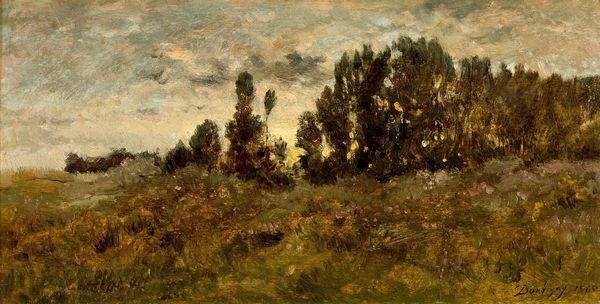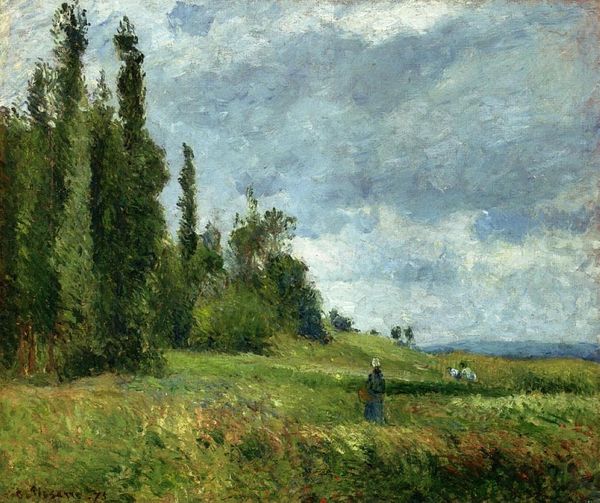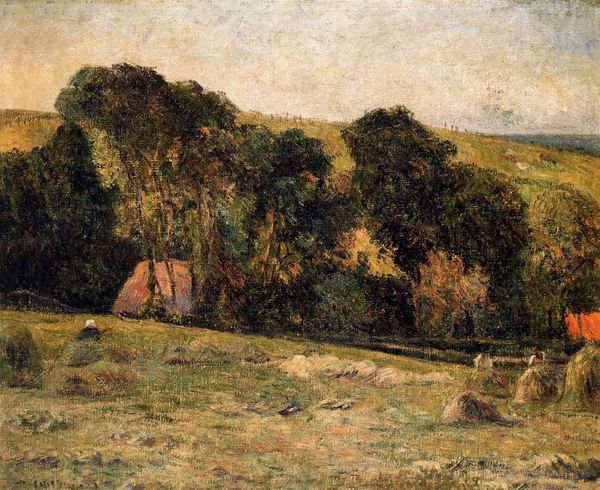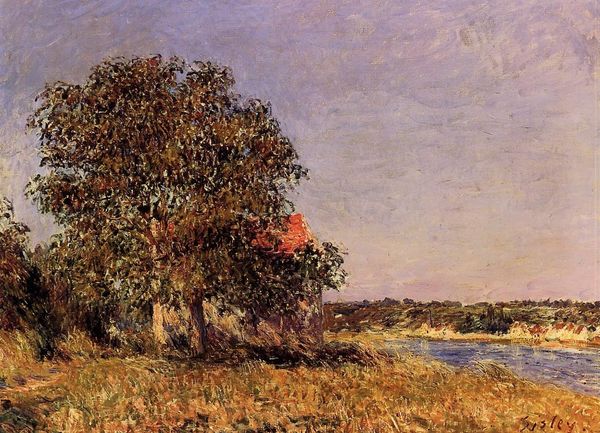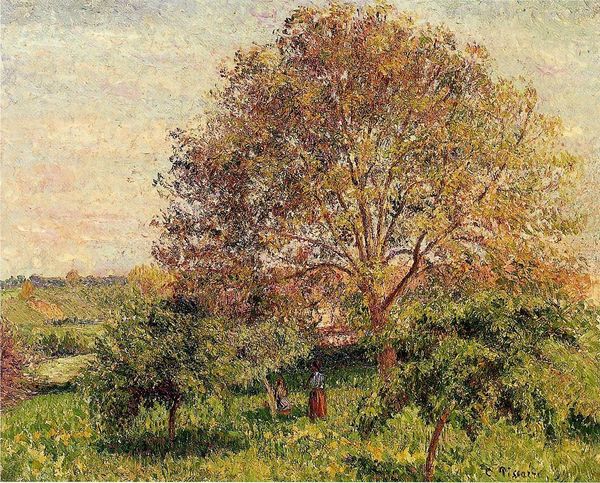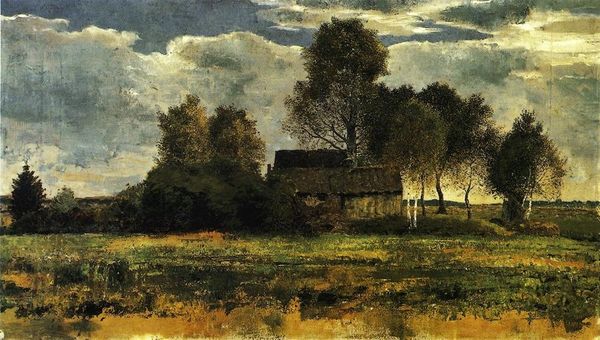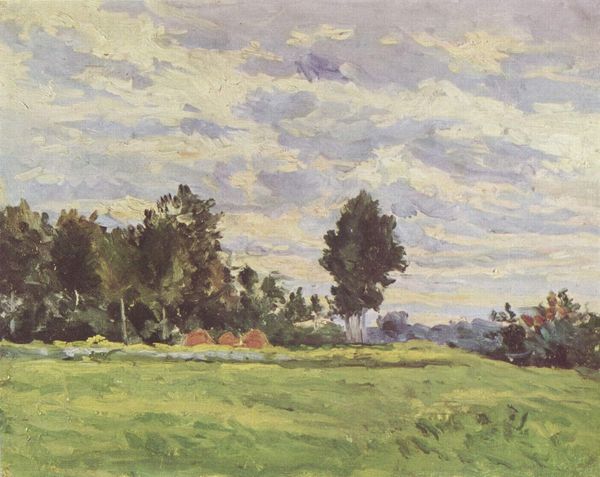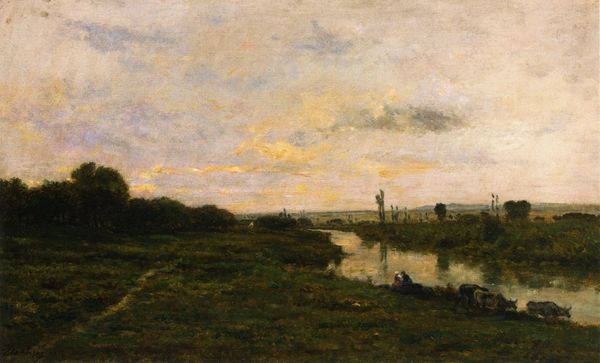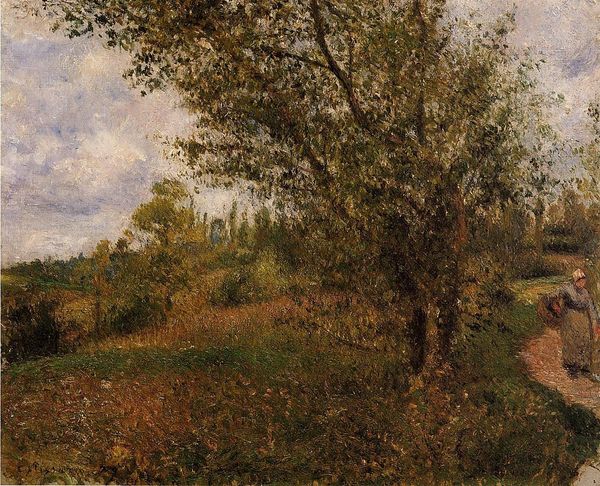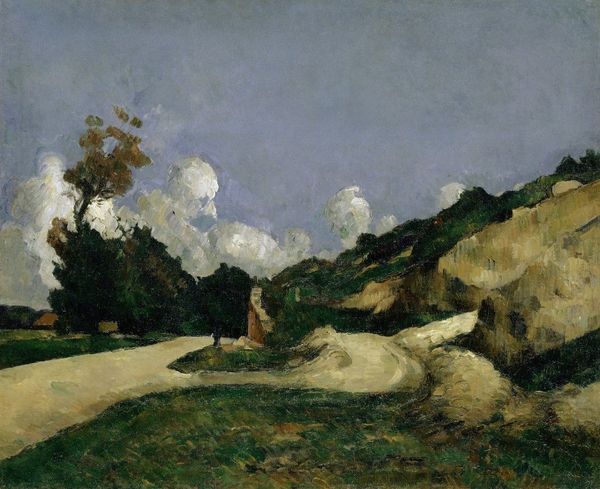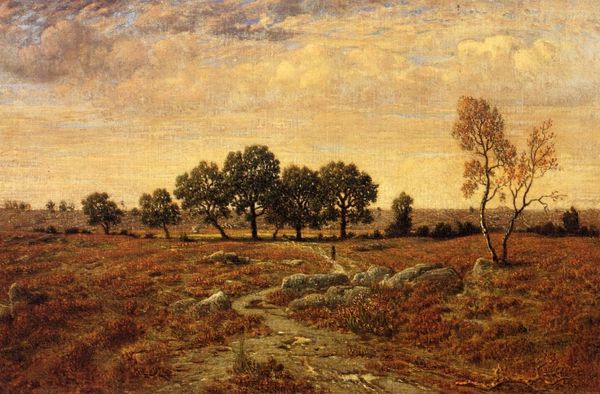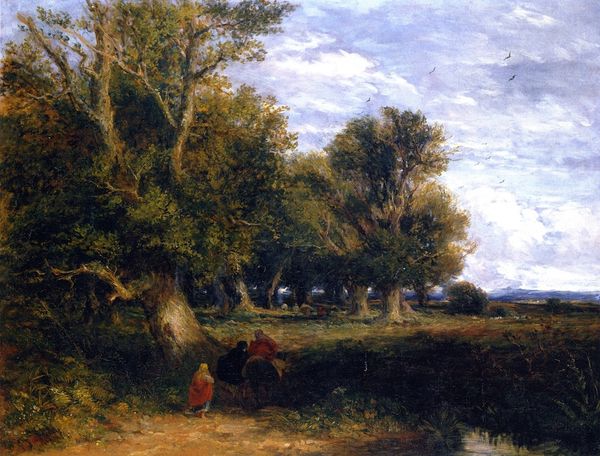
painting, plein-air, oil-paint, impasto
#
tree
#
sky
#
painting
#
impressionism
#
grass
#
plein-air
#
oil-paint
#
landscape
#
impasto
Dimensions: 81 x 99.6 cm
Copyright: Public domain
Curator: Gauguin painted "Landscape with Poplars" in 1875, early in his career when he was closely aligned with Impressionism and painting en plein air. Editor: The first thing that strikes me is how atmospheric it is; the sky feels heavy, pressing down on the landscape. The paint application is quite thick in places, particularly in the foliage, giving it a palpable texture. Curator: Indeed. The impasto adds to the immediacy of the work, capturing a fleeting moment in nature. However, beyond the surface, it is essential to recognize that landscape painting in the 19th century was tied to emerging national identities and bourgeois values. Gauguin, though perhaps unconsciously at this stage, engages with these themes. What is the land representing, and for whom? Editor: I can see your point, but when I observe the way the light catches the tops of those distant poplars or the varied greens describing the grassy field, I mostly read the formal properties conveying space. Note also the careful triangulation of elements from lower-left foreground through the poplars on the horizon to the upper right quadrant. Curator: But that sense of pastoral calm is carefully constructed, perhaps masking the complex relationships between land ownership and labor that underpinned the French countryside. The placement of figures within such landscape reinforces or subverts established visual discourses that were developing at the time. Who benefits from this idyllic scene? Who is absent? What stories do those absenses speak? Editor: I grant you this prompts some potentially critical reflection on how we read our representational inheritance today. Yet, if we get pulled down roads like these at every turn, what is gained, what lost? Must we never be free to delight in compositional strategies, facture, light effects? To dwell on the pleasure afforded by those things, for some of us, IS the picture, is our route to some understanding or deeper empathy even. Curator: That's fair enough; let's just remember that "pleasure" and "empathy" can be mediated experiences reflecting existing power dynamics and cultural expectations of that era. Thank you; that's helpful to remember. Editor: Thanks, too; seeing through your lenses does reveal more complex levels, which I will bear in mind.
Comments
No comments
Be the first to comment and join the conversation on the ultimate creative platform.

